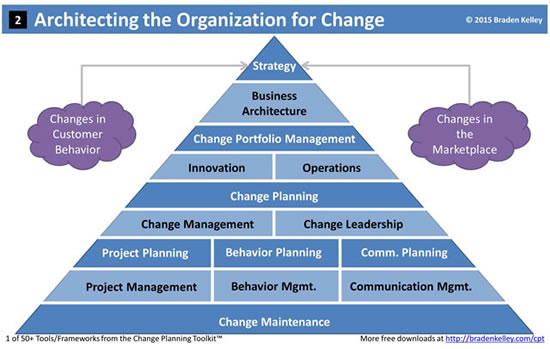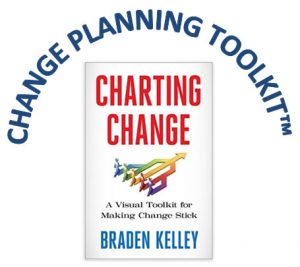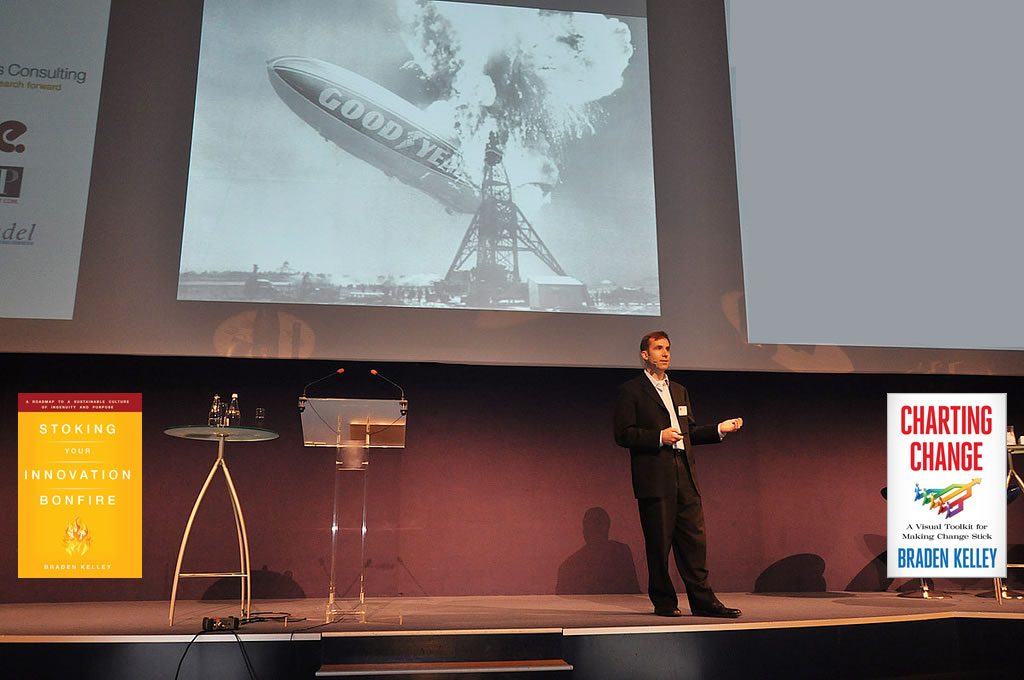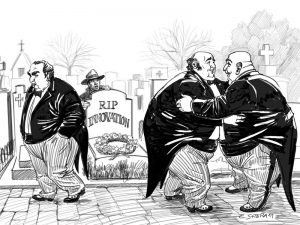A Crash Course in the Basics

GUEST POST from Douglas Ferguson
Are you interested in facilitating a design thinking session at your workplace or for another organization? Have you learned about design thinking and want to get started or deepen your skills? If you are a newbie to design thinking facilitation, this is the guide for you. We’ve highlighted the basics you need to know to lead a design thinking or innovation workshop. Facilitation skills are essential to navigating complex business problems, and a skilled facilitator can supercharge the team’s performance. We encourage you to attend our Facilitation Lab, a weekly virtual meetup to support effective implementation.
Read this design thinking facilitator guide, and you’ll have solid tools to be successful from start to finish.
What is Design Thinking?
To start, let’s define some key terms. First, design thinking. Design thinking is a process used for creative problem-solving; a methodology that puts the end-user or customer at the center of decision-making. Design thinking is also characterized by an emphasis on prototyping and testing ideas and working in a highly collaborative manner with a cross-disciplinary team. Design thinking isn’t a passing business trend. It’s a powerful and widely-implemented approach to strategic work adopted by both startups and major corporations to tackle business challenges. Here are a few of our favorite design thinking books we recommend adding to your library for an in-depth background.
A design thinking facilitator leads collaborative working sessions that utilize design thinking practices to reinvigorate creative growth. The gatherings include brainstorms, innovation workshops, executive summits, design springs, multi-day workshops, and long-term projects.
A design thinking facilitator is a coach to innovative, productive group think and work.
Design thinking facilitators help teams focus on the customer throughout the process and uncover new insights and ideas typically aren’t revealed during business as usual (ex. the boss has an epiphany in the shower and tells the team to execute). In a nutshell, a design thinking facilitator is a conduit to innovative productive group discovery and creation. Facilitation skills are key to maximizing these outcomes.
Want to learn the basics of how to facilitate a design thinking workshop? Read our 7-step guide below, then consider our Workshop Design Course to help you get started.
Step 1: Get Focused
Your first task as a design thinking facilitator is to clarify and define what you need to accomplish through your workshop or meeting. You want to determine the focus based on team needs or challenges. Record the primary goal and high-level questions to answer, and make sure participants are aligned on defined objectives.
Pro-tip: Before planning the workshop, consider 30-60-minute conversations with each stakeholder before the design thinking session to make sure objectives are clear.
Step 2: Make the Guest List
Now that you’ve defined objectives, you and the key stakeholder(s) need to determine fitting participants. Who’s taking part in the workshop? Your client will likely have a strong hand in building the guest list. As the design thinking facilitator, it’s crucial that you advise here.
Too many people leads to chaos. Too few people means too few ideas.
Diversity in skillset, expertise, attitude, tenure, etc. is essential to an informed perspective. The more points-of-view that are represented, the more applicable your solutions. In terms of number of participants, somewhere between 7 to 15 is ideal. Too many people leads to chaos. Too few people means too few ideas.
Step 3: Make Your Agenda
With the objective and participants determined, the next step of facilitating a design thinking workshop is the agenda. A wise way to plan your agenda is to start at the end: With what tools do you need to leave the design thinking session? Are you prioritizing alignment? A system or process in place? A collection of novel ideas? Are you looking for a prioritized roadmap or a paper prototype of a new experience? When you clearly define your goals, you can plan the design thinking activities to build toward the conclusion.
The individual activities you will implement varies greatly based on the challenge. Need inspiration to kick off your Design Thinking activities? There are many free resources to help guide you and your team on your journey. We’ve also outlined exercises for virtual workshops here.) No matter your timeline, prioritize time for introductions, icebreakers, and short breaks to check inboxes.
Pro tip: Be generous when time-boxing your design thinking activities. Everything will take longer than you think. A good rule of thumb is to double the time you imagine an individual activity will take.
Step 4: Get Your Space
Next up: Where are you going to host your design thinking workshop? While it might sound like a minor detail, the space affects the day’s success.
We recommend getting participants out of their workspace(s) to inspire fresh thinking and distance from day-to-day work. Whether you need to offer a hybrid option, have the budget for an offsite space, or need to use the office, consider the following to enhance the experience:
- Look for good natural light and character. (A windowless hotel conference room is not ideal.)
- Provide comfortable seating for all. (Simple, but we’ve seen it happen.)
- Guarantee wall space or boards for pinning materials and capturing ideas.
- Don’t forget AV needs: a projector for presenting, a screen if someone needs to collaborate remotely, etc.
Want more information on choosing a space? Check out 7 Things to Consider When Choosing a Workshop Venue here.
Step 5: Gather Supplies
With space, participants, and a solid agenda, you now need supplies to execute your workshop. Your exact supplies will be driven by your activities, agenda, and chosen space. Here are some basics to get you started:
If you want to dive deeper into the specific supplies that are recommended for a design sprint (which are helpful for any workshop), read here.
Pro-Tip: If possible, bring a filling breakfast and lunch so you don’t have to leave to eat. Also, healthy snacks, water, and coffee will keep people engaged as the day goes on.
Step 6: Be the Leader
It’s the big day! It’s time for you to lead the group through the agenda and activities you worked so hard on. The more you facilitate, the more skilled you become.
Make sure to be yourself and keep the following things in mind as you lead the team in design thinking:
- You’re the boss: People are looking for you to guide them. You’re prepared and are the expert. Establish your authority early and feel confident making decisions and telling the group when it’s time to move forward in the agenda.
- Establish rules: Let the group know the rules of the day. Encourage people to stay off their phones and to fully participate in the session. Let them know that there are designated breaks.
Give everyone a voice: As the facilitator, you are responsible for making sure everyone is heard. If you notice someone being quiet, pull them into the conversation. You designed the guest list with their contribution in mind.
Step 7: Wrap It Up & Play It Back
After the workshop has come to a close, recognize your role as a design thinking facilitator to equip the group with tools for long-term success. Consider these in the days afterward:
- Photograph and document: Make sure you photograph important output from the meeting: Post-its, diagrams, or worksheets that may have been created.
- Synthesize the learnings: Take time to reflect on the session and the ideas that came of it. Create a MURAL board or a short presentation to share with participants and their teammates.
Get the group back together: Schedule time to share back your learnings with the participants and make plans together for how to implement thinking and learnings into daily work.
Looking to become a Design Thinking Facilitator?
What’s the importance of bringing in a professional to lead the session? A design thinking facilitator positively disrupts the team dynamic. Read up on why professional facilitation can make a difference.
We hope you’re excited to become a Design Thinking facilitator. Voltage Control has design thinking facilitator training will maximize your facilitation skills. Our Facilitation Certification programs will guide you through key facilitation skills and provide you with ample opportunities to practice.
Article originally published at VoltageControl.com
Image credit: Pexels
 Sign up here to join 17,000+ leaders getting Human-Centered Change & Innovation Weekly delivered to their inbox every week.
Sign up here to join 17,000+ leaders getting Human-Centered Change & Innovation Weekly delivered to their inbox every week.
 Drum roll please…
Drum roll please…![]() Sign up here to get Human-Centered Change & Innovation Weekly delivered to your inbox every week.
Sign up here to get Human-Centered Change & Innovation Weekly delivered to your inbox every week.



 Innovation is not a solo activity. While the rare lone genius may be able to invent something on their own (although still always inspired by others), nobody can innovate by themselves. Innovation, by its very nature, requires collaboration.
Innovation is not a solo activity. While the rare lone genius may be able to invent something on their own (although still always inspired by others), nobody can innovate by themselves. Innovation, by its very nature, requires collaboration. What does an innovation coach look like?
What does an innovation coach look like?



